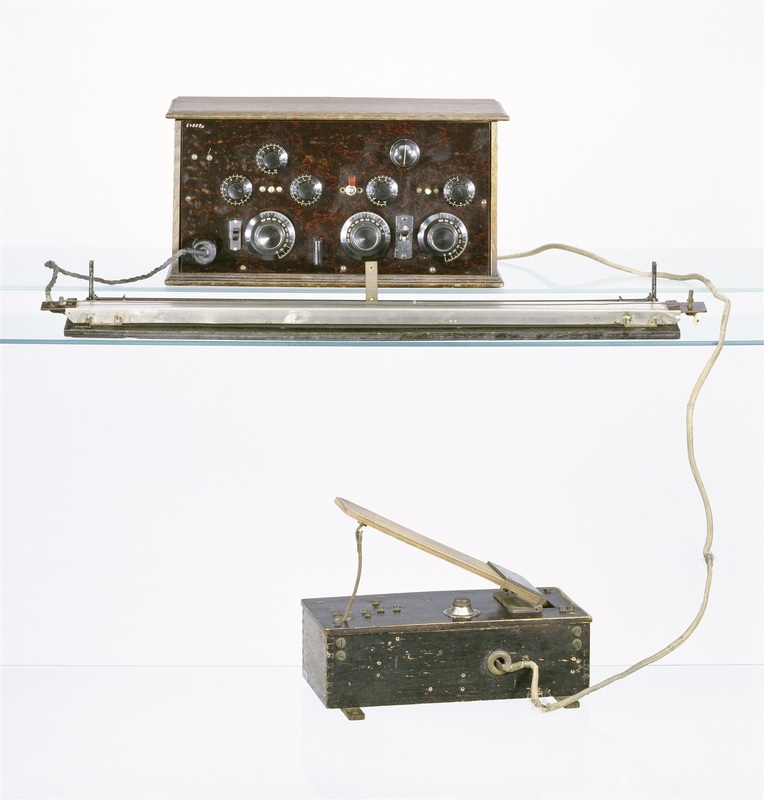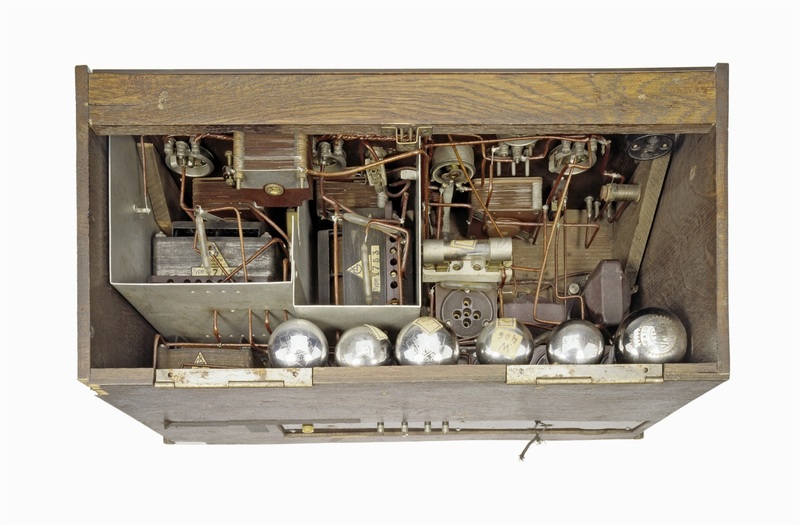From the laboratory to the concert hall
The birth of the Trautonium
While Sala and the Trautonium have become intricately linked in cultural memory, it was actually Friedrich Trautwein (1888–1956), the German inventor and engineer, originally conceived the Trautonium. At the Radio Research Section (Rundfunksversuchsstelle or RVS for short) of the Berlin Academy of Music, Trautwein was working on the development of an electronic musical instrument to broadcast music via radio and to study timbre.
The earliest prototype developed by Trautwein in 1929 had a fingerboard consisting of a resistance wire, stretched over a metal rail, coupled to a relaxation oscillator, which produced overtone-rich saw tooth waves. When the performer pressed the wire against the rail, the circuit was completed – the pitch of the sound heard was determined by the position of the finger, as this determined the resistance controlling the oscillator’s frequency. Its interface – a hybrid between a string and keyboard instrument – meant that a continuous tone spectrum was made available to the player. In comparison, the majority of electronic instruments of that period retained the keyboard with its twelve tones per octave division. It was because of this very feature that the composer Paul Hindemith (1895–1963), who was teaching at the Academy, took a particular interest to Trautwein’s ingenious construction. Hindemith was a pivotal figure in the Trautonium’s development: he was the first prominent musician to compose for the Trautonium. Perhaps more vitally, Hindemith introduced his student Oskar Sala to Trautwein, who assisted Trautwein in the further development of the instrument’s prototype.[2]
First tunes on the Trautonium
The Trautonium made its debut at the New Music Berlin festival in 1930. For the Trautonium’s unveiling Hindemith composed Des kleinen Elektromusikers Lieblinge, a collection of seven short pieces for three Trautoniums, performed by Hindemith himself, Sala and the pianist Rudolf Schmidt.[3]
Paul Hindemith: 7 Triostücke für 3 Trautonien
Featured in Oskar Sala: Elektronische Impressionen
CD, Erdenklang, 1998.
Original vinyl recording from 1977.
Individual pieces (Titles according to Hindemith’s manuscript)
- Langsam
- Langsam (Fernwerk)
- Mäßig bewegt
- Breit
- Mäßig schnelle Achtel
- Lebhaft
- Langsam
[2] For more detailed information on the early development of the Trautonium, please refer to Peter Donhauser, Elektrische Klangmaschinen. Die Pionierzeit in Deutschland und Österreich, Vienna 2007; Thomas Patteson, Instruments for New Music. Sound, Technology, and Modernism, Oakland 2016, pp. 114–151. Benedikt Brilmayer’s dissertation builds on Donhauser’s work and enriches it with the thorough examination of archival material from the Deutsches Museum, Munich and the Universität der Künste, Berlin. Benedikt Brilmayer, Das Trautonium. Prozesse des Technologietransfers im Musikinstrumentenbau, PhD Dissertation, Augsburg 2017, accessible online via https://opus.bibliothek.uni-augsburg.de/opus4/frontdoor/index/index/docId/4059.
[3] For Sala’s first-hand account on his experience leading up to the Trautonium’s debut and his performance on the instrument, see Peter Badge, Oskar Sala. Pionier der elektronischen Musik, Göttingen 2000, [unpaginated].
Citation: Julin Lee, ‘Subharmonic Fantasias: The Legacy of Oskar Sala and the Mixturtrautonium’, in: Materiality of Musical Instruments. A Virtual Exhibition.


